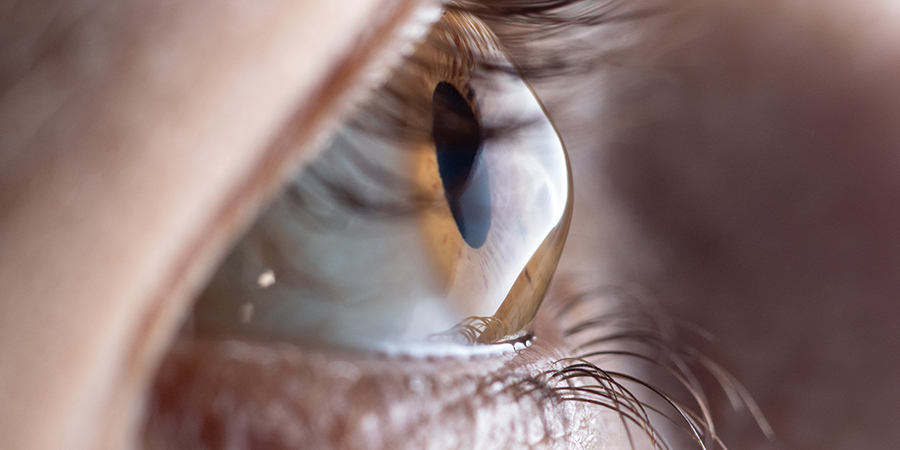Vision is one of the most precious senses we have, and maintaining good eye health is essential for a quality life. One of the lesser-known but potentially serious eye conditions is keratoconus. This progressive eye disease can severely impact vision and quality of life if left undiagnosed or untreated. Early detection and timely intervention by an eye care specialist are crucial in managing this condition.
In this blog, we will explore what keratoconus is, its causes, symptoms, diagnosis, and treatment options — and most importantly, when you should see a specialist.
What Is Keratoconus?
Keratoconus is a progressive eye disease that affects the cornea, the clear, dome-shaped front surface of the eye. In a healthy eye, the cornea is round and helps focus light onto the retina to produce clear vision. However, in keratoconus, the cornea gradually thins and begins to bulge outward into a cone-like shape.
This distortion prevents light from being focused properly, leading to blurred vision, glare, halos, and increased sensitivity to light. The condition usually affects both eyes but may progress at different rates in each.
Who Is at Risk?
Keratoconus often begins in adolescence or early adulthood, typically between the ages of 10 and 25, and can progress for 10 to 20 years. While the exact cause is unknown, several risk factors can contribute:
- Genetics: Family history of keratoconus increases the risk.
- Chronic Eye Rubbing: Often associated with allergies or irritation.
- Underlying Conditions: Such as Down syndrome, Ehlers-Danlos syndrome, and connective tissue disorders.
- Ethnicity: Higher prevalence in certain ethnic groups like Asians and Middle Easterners.
Symptoms of Keratoconus
Early stages of keratoconus may not be noticeable, and symptoms often resemble other vision problems. As the disease progresses, symptoms become more pronounced and may include:
- Blurred or distorted vision
- Increased sensitivity to light and glare
- Frequent changes in eyeglass prescription
- Difficulty seeing at night
- Seeing halos around lights
- Ghosting or multiple images
In advanced cases, the cornea may develop scarring, making vision even more difficult to correct with glasses or soft contact lenses.
Stages of Keratoconus
Keratoconus is a progressive condition and is typically classified into the following stages:
- Mild (Early stage): Slight thinning and changes in the shape of the cornea. Vision may still be corrected with glasses.
- Moderate: Increasing distortion in corneal shape. Vision becomes more difficult to correct with glasses; rigid gas permeable lenses may be needed.
- Advanced (Severe stage): Significant thinning and corneal scarring, with severe visual impairment. Surgical intervention may be required.
How Is Keratoconus Diagnosed?
Diagnosing keratoconus requires a comprehensive eye examination by an ophthalmologist or optometrist. Tests may include:
- Corneal Topography: The most effective test for detecting keratoconus. It maps the curvature of the cornea in detail.
- Pachymetry: Measures the thickness of the cornea.
- Slit-lamp Examination: Allows the doctor to examine the shape and condition of the cornea.
- Refraction Test: Determines the clarity of vision and how well corrective lenses help.
Early diagnosis is crucial to managing the condition and preventing progression.
Treatment Options for Keratoconus
The treatment of keratoconus depends on the stage of the disease. Options range from non-invasive corrective lenses to surgical procedures:
1. Eyeglasses and Soft Contact Lenses
In the early stages, glasses or soft contact lenses may correct the vision. However, as the disease progresses, these may no longer provide adequate correction.
2. Rigid Gas Permeable (RGP) Lenses
These lenses maintain their shape and help provide clearer vision by covering the irregular corneal surface.
3. Scleral and Hybrid Lenses
For advanced keratoconus, scleral lenses (larger lenses that vault over the cornea and rest on the sclera) or hybrid lenses (combination of hard center and soft edge) are often used.
4. Corneal Cross-Linking (CXL)
A minimally invasive procedure that strengthens the corneal tissue to halt the progression of keratoconus. It involves applying riboflavin (vitamin B2) eye drops and exposing the cornea to ultraviolet (UV) light.
5. Intacs
Small, crescent-shaped inserts implanted into the cornea to flatten its shape and improve vision.
6. Corneal Transplant
In very advanced cases with severe thinning or scarring, a corneal transplant (keratoplasty) may be necessary to restore vision.
When Should You See a Specialist?
Early detection and timely intervention are the keys to preserving vision. You should consult a specialist if you experience:
- Rapidly changing vision that is not corrected with glasses
- Double vision or ghosting in one eye
- Increased sensitivity to light
- Frequent headaches or eye strain
- Family history of keratoconus or corneal disorders
An ophthalmologist or cornea specialist can perform detailed corneal mapping and recommend the appropriate management or surgical intervention.
Living With Keratoconus
Living with keratoconus can be challenging, especially as it affects daily activities like reading, driving, or using screens. However, with proper management, most patients can lead a normal life. Here are some tips:
- Regular Eye Exams: Monitor the condition and adjust treatment as needed.
- Avoid Eye Rubbing: It can worsen corneal thinning.
- Use Prescribed Lenses: Follow your specialist’s advice on contact lens use.
- Protect Your Eyes: Wear sunglasses and avoid trauma to the eye.
- Emotional Support: Joining support groups or speaking to others with keratoconus can help you cope better.
Conclusion
Keratoconus is a progressive but manageable eye condition. With early diagnosis, modern treatment options like corneal cross-linking, and specialized lenses, patients can retain good vision and avoid complications. If you or someone you know is experiencing unusual vision changes or has a family history of corneal disorders, don’t delay—consult a specialist immediately.
Your eyes deserve expert care. Trust your vision with a specialist who understands keratoconus.
Contact us on 9168690448 / 9158681123
Website – www.chetnahospital.co.in
Address – Chetna Hospital,
Sambhajinagar, MIDC, G Block, Near Rotary Club, Chinchwad 411019
.
.
.
#hospital#pune#pcmc#chinchwad#medical#medicalservices#dryeyetreatment#dryeyerelief#dryeyedisease#dryeyetherapy#catract#catractsurgery#catracteyesurgery#catracteyeoperation#eyedoctor#eye#glaucoma#conjunctivitis#ophthalmologist#eyediseases#eyepain#pinkeye#hazeleyes#myopia#eyeinfection#amblyopia#dryeyesyndrome#eyeproblems#motibindu#motibinduoperation













